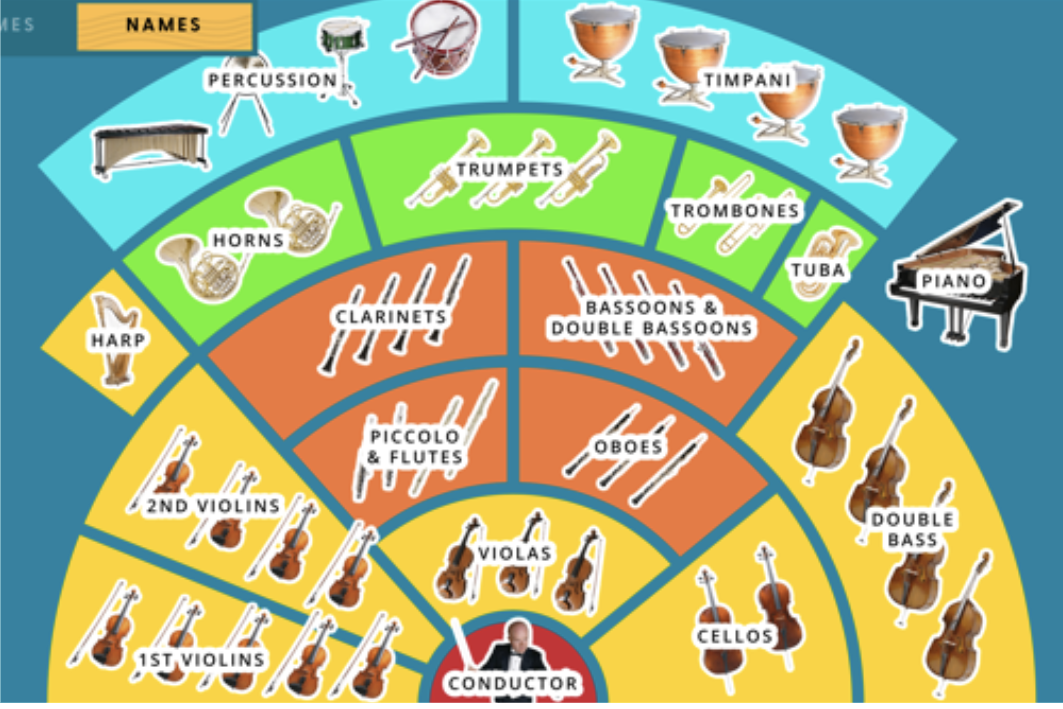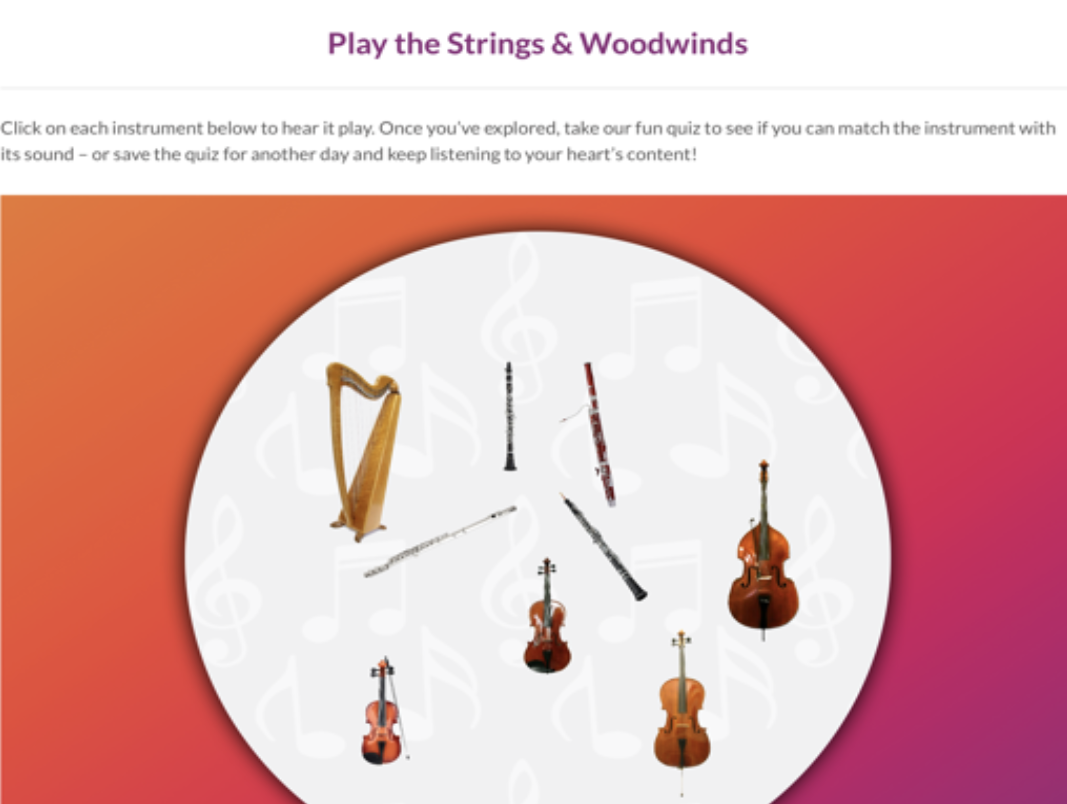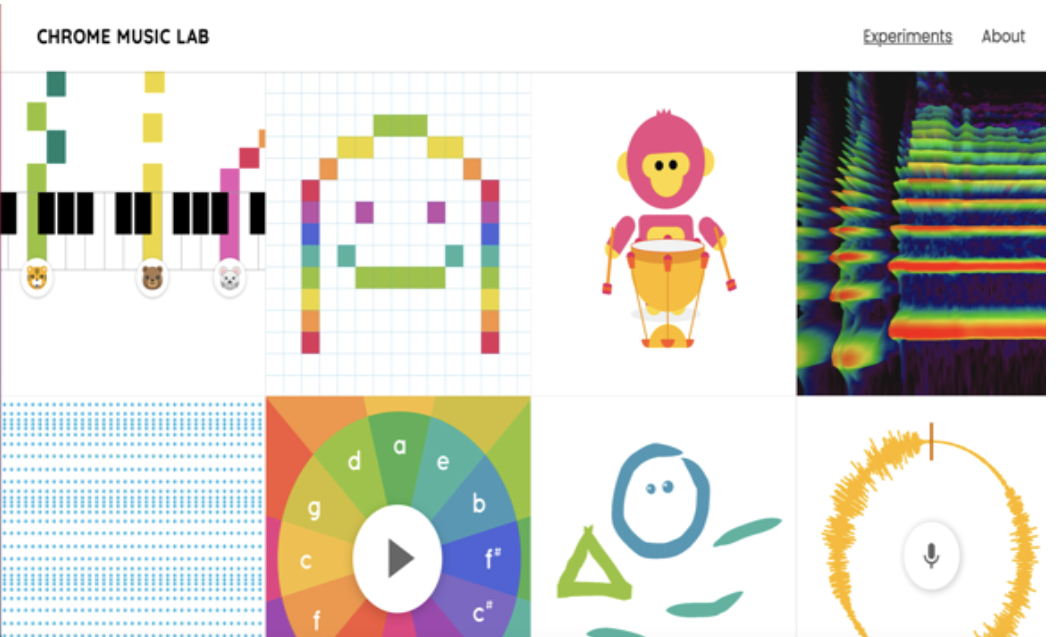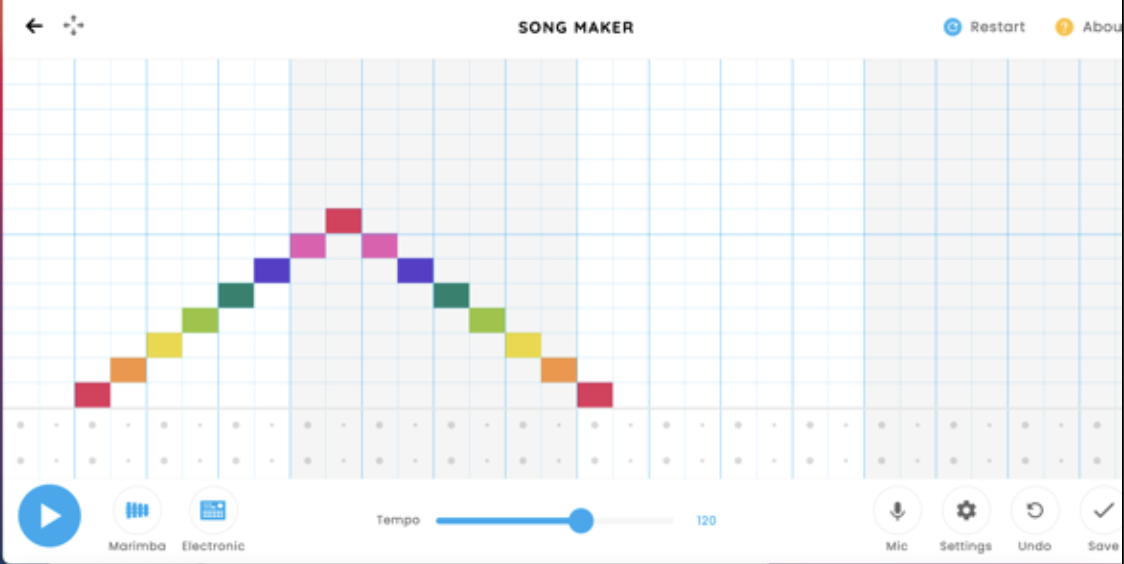Nisreen Jardaneh
Exploring Music Composition and Appreciation in Online Music Lessons for Students with Exceptionalities
Teaching music online has become the new norm. Even though this option comes with many benefits, it can be a bit challenging when you teach students with exceptionalities. The question is: How can you create an engaging online lesson that attracts and maintains the attention of the student?
Music Appreciation
Explore music elements with live music:
Performing live music is such an engaging experience. You can do this activity at any point in the lesson. For example, it could be done as a warm up to focus on breathing, stretching, relaxing or engaging. You can also play during the lesson to introduce music elements (such as tempo, dynamics, or articulation), or to do a music and movement activity. Try to encourage active listening by instructing your student to participate as you perform through actions like clapping, or tapping, dancing, etc. You can use visuals or pictures if this helps to convey the concept to the student, for example a picture of a bunny for jumpy (staccato) and a snake for smooth (legato). Or for students who are kinaesthetic learners, you can use movement, for example by asking the student to jump like a bunny for staccato and slither like snake for legato. You can also foster engagement and active listening by asking questions, like “was the music loud or soft”? The students will be listening and processing the music and learning in their own unique way. One of my favourite things to do when performing pieces for my students is to make up a story on the spot while playing. This encourages imagination and you get some giggles along the way!
Instruments of the Orchestra:
Learning about different instruments by allowing the student to hear the sounds and see what the instruments look like is a great music appreciation activity. Classics for Kids website has interactive orchestra sections. Each family of instruments has a different colour, when you click on it you hear its music. It plays the music of the Young Person’s Guide to the Orchestra.
Performing live music is such an engaging experience. You can do this activity at any point in the lesson. For example, it could be done as a warm up to focus on breathing, stretching, relaxing or engaging. You can also play during the lesson to introduce music elements (such as tempo, dynamics, or articulation), or to do a music and movement activity. Try to encourage active listening by instructing your student to participate as you perform through actions like clapping, or tapping, dancing, etc. You can use visuals or pictures if this helps to convey the concept to the student, for example a picture of a bunny for jumpy (staccato) and a snake for smooth (legato). Or for students who are kinaesthetic learners, you can use movement, for example by asking the student to jump like a bunny for staccato and slither like snake for legato. You can also foster engagement and active listening by asking questions, like “was the music loud or soft”? The students will be listening and processing the music and learning in their own unique way. One of my favourite things to do when performing pieces for my students is to make up a story on the spot while playing. This encourages imagination and you get some giggles along the way!
Instruments of the Orchestra:
Learning about different instruments by allowing the student to hear the sounds and see what the instruments look like is a great music appreciation activity. Classics for Kids website has interactive orchestra sections. Each family of instruments has a different colour, when you click on it you hear its music. It plays the music of the Young Person’s Guide to the Orchestra.

Another website that is fantastic to use is Inside the Orchestra, where you can listen to individual instruments and read brief information about it. One of the games that you could do is to show the student two instruments, play the sound of an instrument and ask the student to guess which instrument was playing. Then you can reveal the answer! This is a fantastic activity for building aural awareness and active listening skills. The parent or guardian can assist with this game during the lesson or during practice sessions. While listening to the instrument playing, you can pretend holding and playing this instrument to make it more interactive, and make sure to ask if the student had a favourite instrument!

Creative Music Making:
Music composition and improvisation:
Wouldn’t it be fun to create music without thinking too much about it? If it sounds good, then it is good! Following on what the famous composer Hans Zimmer said “If somebody tells you there’s a rule, break it!”. This approach to composition can be so liberating for students who are perfectionists, or for those who have difficulty keeping track of all the composition “rules.” No need to put a lot of thinking into it, just enjoy the process of creating! Chrome Music Lab is a free website where you can enjoy a lot of educational music activities.
Wouldn’t it be fun to create music without thinking too much about it? If it sounds good, then it is good! Following on what the famous composer Hans Zimmer said “If somebody tells you there’s a rule, break it!”. This approach to composition can be so liberating for students who are perfectionists, or for those who have difficulty keeping track of all the composition “rules.” No need to put a lot of thinking into it, just enjoy the process of creating! Chrome Music Lab is a free website where you can enjoy a lot of educational music activities.

One of these activities is song maker, where you can create pieces, save and share them. The music notes or blocks are colour coded so it is visually easier to use, which is an important factor when considering composition activities for students with exceptionalities. To use this activity in virtual lessons, you will need to control the screen and ask the student what they would like to do unless the student is able to access and use the program independently and share their screen with you. When your student finishes their melody, you can add percussion, adjust the speed, and pick the instrument for the composition. It is amazing to see the outcome of this process, and throughout you will be covering abstract concepts like music alphabet, patterns, tempo, texture, and timbre in a fun and practical way!

You can make online music lessons exciting and engaging by trying a variety of these activities and adapt as you see fit. Always remember to monitor and observe the reactions of the students, and adjust your teaching plan accordingly. Students will learn a lot through this experience as long as you continue to listen, adapt and create!
Websites:
https://musiclab.chromeexperiments.com
https://www.classicsforkids.com/music-games/
https://insidetheorchestra.org/musical-games/
Happy Teaching!
Featured links
Contact Us
-
1002 Beaverbrook Road, Suite 13Kanata, ON K2K 1L1
-
jeff@lotuscentre.net
-
(613) 801-0031
Copyright © 2025 by Lotus Centre for Special Music Education.
Our programs are funded in part by the Azrieli Foundation and the Ottawa Community Foundation



